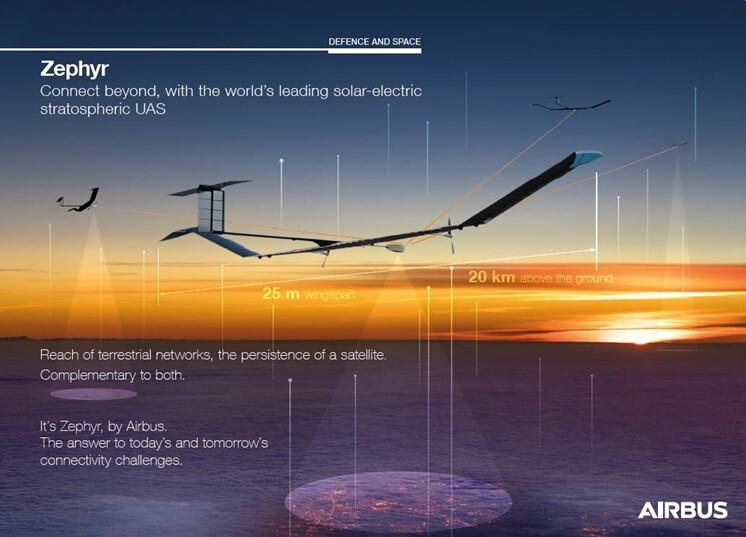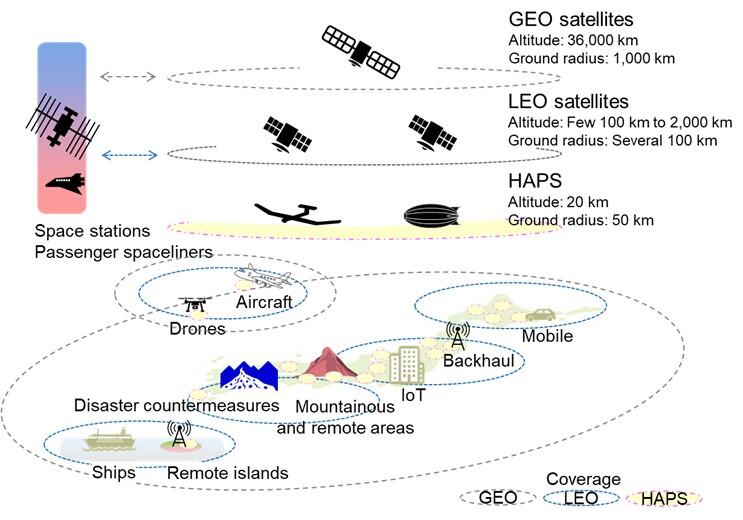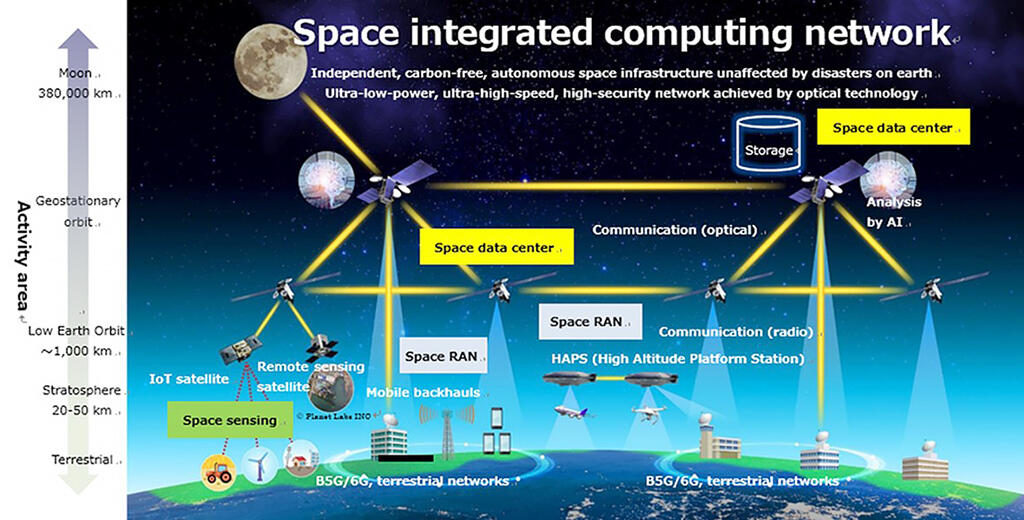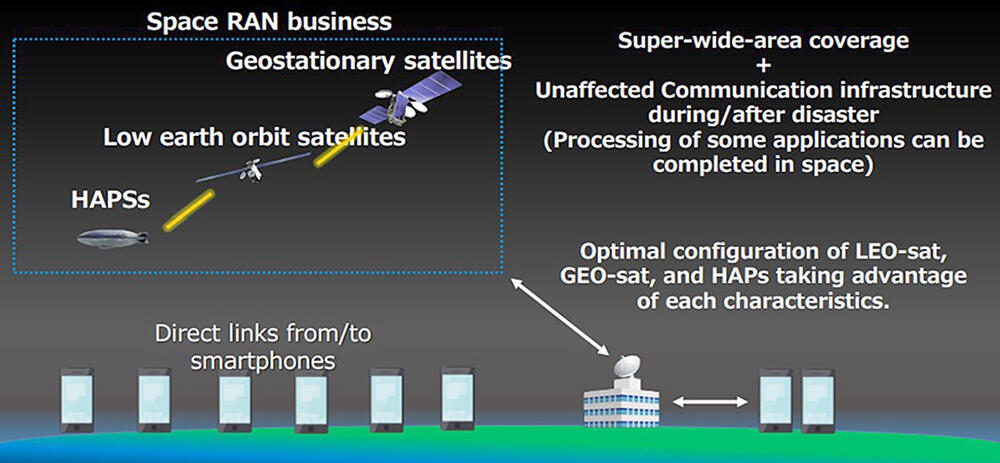On January 17, a group of four companies, comprising Airbus, NTT, NTT DoCoMo, and SKY Perfect JSAT Group, signed a memorandum of understanding to consider building a cooperative system for conducting R&D and demonstration experiments towards finding the early deployment requirements of the high-altitude platform "High Altitude Platform Station (HAPS)", network which will fly in the stratosphere approximately 20 kilometers above the sky. As a result, the four companies will promote research and development for the early deployment of HAPS.
HAPS "Zephyr" being developed by Airbus will provide communication services from the stratosphere to the ground by mounting communication equipment, such as base station equipment, on the part called the payload at the tip of the aircraft. To date, DoCoMo and Airbus have succeeded in demonstrating radio wave propagation between the stratosphere and the ground using "Zephyr S", demonstrating that HAPS can provide a sustainable network from the stratosphere to the ground. However, the space integrated computing network business that NTT and SKY Perfect JSAT Group are trying to build through their respective NW/computing infrastructure and space assets/business will achieve the flow from information collection to valuation, including information from space, based on the three functions of "Space Sensing (Sensing Data Integration Platform for Ground and Space)", "Space Data Center (Large Capacity Communication / Computing Platform in Space)", and "Space RAN (Space Communication Platform)".

© Airbus
Using the space sensing network, the group will contribute to increasing the value of space data and expanding the possibilities of its utilization by providing a sensing platform that integrates space and the Earth. In the space data center, a huge amount of data collected in space is immediately aggregated and analyzed in outer space through a high-speed optical communication network. Immediate delivery of only necessary information to users improves real-time space data utilization and user convenience. Space Radio Access Network (RAN) will provide a communication platform for 5G Evolution & 6G by constructing an access service using geostationary satellites (GEOs), low earth orbit satellites (LEOs), and HAPS.

© SKY Perfect JSAT/NTT/NTT DOCOMO

© SKY Perfect JSAT/NTT/NTT DOCOMO

© SKY Perfect JSAT/NTT/NTT DOCOMO
The signing of this memorandum, in collaboration with Airbus' HAPS "Zephyr" and the communication networks of NTT, DoCoMo, and SKY Perfect JSAT Group, will promote cooperation among the four companies to discover the applicability of HAPS for mobile connectivity and its usefulness in communication systems using HAPS. This is expected to be used to develop future technologies and services. The four companies will consider "extending coverage" to all locations, including the sky, sea, and space, as an initiative toward further sophistication of 5G and 6G. Moreover, network construction by HAPS can easily realize coverage to the sky and sea. Therefore, it is expected to be effective for disaster countermeasures, securing communication capacity in crowded areas, such as event venues, and the remote control of heavy machinery at construction sites. In addition to HAPS, Non-Terrestrial Network (NTN) technology, which is a non-terrestrial network using GEO and LEO, is expected to realize this "coverage expansion".
The four companies will call this service using NTN technology such as GEO, LEO, and HAPS "Space RAN" and will proceed with the study of its realization. Through providing this service and realizing ultra-wide area coverage it will be possible to improve convenience and provide new added value, such as development of access from remote areas, such as islands, and improvement of the communication environment including on airplanes and ships, in addition to being used for disaster countermeasures. Furthermore, in addition to research and development on technology focusing on communication from the stratosphere based on HAPS, the group will also work on the development of HAPS aircrafts, standardization and institutionalization of HAPS operations, and study of business models for the commercialization of network services by HAPS. The main targets of research and development will be an examination of the possibility of applying HAPS to connections with ground-based mobile devices and base station backhaul (fixed line that supports high-speed, large-capacity information transmission between a large number of wireless base stations and a core network in a mobile communication network), evaluation of communication performance in various frequency bands in communication systems using HAPS, and implementation of technical studies for cooperation between HAPS, satellites, and ground base stations.
This article has been translated by JST with permission from The Science News Ltd.(https://sci-news.co.jp/). Unauthorized reproduction of the article and photographs is prohibited.




